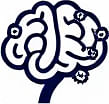The Balanced Scorecard as a Strategic Mental Model
 by Max Miller
by Max Miller
The Balanced Scorecard offers a framework for aligning organizational goals with performance metrics across financial, customer, internal processes, and growth areas. This approach aids in clearer decision-making and long-term success for businesses and individuals alike.
The Balanced Scorecard serves as an essential tool in strategic planning, helping individuals and organizations focus on multiple dimensions of success. It emerged from the need to go beyond traditional financial measures, incorporating a broader view of performance.
Origins and Core Concept
The Balanced Scorecard was introduced in the 1990s as a method to translate vision and strategy into actionable objectives. This model encourages viewing performance through four primary perspectives: financial outcomes, customer satisfaction, internal business processes, and learning and growth. For instance, in a business setting, financial indicators might include profit margins, while customer perspectives could involve satisfaction ratings.
By integrating these areas, the model promotes a more holistic approach to achieving goals. Each perspective connects to specific metrics that track progress over time. This structure allows users to identify areas needing improvement and make informed adjustments.
Key Components of the Model
To implement the Balanced Scorecard effectively, one must define clear objectives within each of the four perspectives. Objectives should be specific, measurable, and aligned with overall strategy. For example, a company might set targets for customer retention rates or employee training hours.
Metrics form the backbone of this system, providing quantifiable data to assess performance. Common tools include key performance indicators (KPIs) that offer insights into operational efficiency. Additionally, initiatives outline the steps needed to reach these targets, ensuring that efforts are coordinated across teams.
Benefits for Professionals and Learners
Adopting the Balanced Scorecard can lead to improved decision-making in various contexts. In business, it helps align daily operations with long-term visions, fostering a culture of accountability. Professionals often report enhanced focus on non-financial factors, such as innovation and employee development, which contribute to sustained growth.
For lifelong learners, this model extends to personal cognitive development. By applying similar principles, individuals can balance career advancement with personal well-being. Tracking metrics like skill acquisition or health goals mirrors the organizational approach, promoting better self-management.
Practical Applications and Examples
In practice, many companies use the Balanced Scorecard to drive results. A manufacturing firm, for example, might prioritize internal process improvements to reduce waste, while monitoring customer feedback to refine products. This balanced view prevents overemphasis on short-term profits at the expense of future potential.
On a personal level, someone pursuing cognitive development could adapt the model to track reading habits or professional skills. By setting balanced goals—such as dedicating time to both technical learning and creative pursuits—one can achieve more rounded progress. Real-world examples show that consistent application leads to measurable enhancements in productivity and satisfaction.
Challenges and Solutions
While the Balanced Scorecard is straightforward, challenges can arise in data collection and analysis. Overloading with too many metrics might dilute focus, so prioritizing essential indicators is crucial. Solutions include regular reviews and adjustments to ensure relevance, keeping the system dynamic and responsive to changes.
Training teams or individuals on its use can overcome initial hurdles. Simple tools like spreadsheets or dedicated software make tracking easier, allowing for quick adaptations based on emerging needs.
Integrating with Other Mental Models
The Balanced Scorecard complements other cognitive tools, such as decision frameworks or problem-solving techniques. By combining it with analytical methods, users gain deeper insights into patterns and trends. This integration supports more effective strategy in psychology-related fields, where understanding behavior and motivation plays a key role.
For instance, in business strategies, pairing it with basic economic principles helps in evaluating market dynamics. The result is a versatile mental model that adapts to diverse scenarios, from corporate environments to individual goal setting.
Conclusion
In summary, the Balanced Scorecard provides a practical framework for achieving balanced performance across key areas. Its value lies in promoting comprehensive thinking and actionable insights, making it ideal for curious minds and professionals alike. By incorporating this model into daily practices, one can foster greater success and personal growth.
